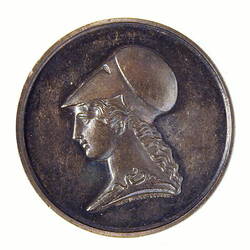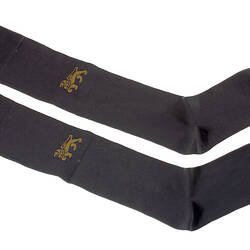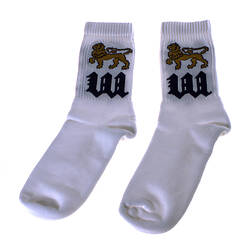Wesley Colleges exist in Melbourne, Perth and Sydney. Perth's college was founded in 1923. The Sydney college is a residential facility connected to the University of Sydney.
Melbourne's Wesley College was founded on 18 January 1866. The Argus pre-empted the context of the College: 'The new institution is to be conducted, not on sectarian, but on general and catholic religious principles. In subservience to this, it is designed to afford the youth of our colony a first class classical and commercial education, as well as instruction in the higher branches of literature.' (The Argus, 11 March 1858).
Through the mid-1860s education-proud Wesleyan Methodists berated the Committee of Wesley College for the lengthy delay in building the much-needed school. The College finally opened in semi-rural St Kilda Road on 18 January 1866, with James Waugh the first President. On Speech Day 1866, the Headmaster James Corrigan, a young Irishman, reported that 'We aim steadily at training into healthy development the whole nature of the pupil, physical, intellectual, and moral'.
The school grew rapidly in its first five years with an enrolment in excess of 200 and new buildings. Students came from throughout Victoria and all its neighbouring colonies to board at the school.
M.H. Irving succeeded Corrigan in 1871. In his first report to the school, Irving clearly defined his priorities: sound moral training, fluency and accuracy in English useage, rapidity and 'perfect accuracy' in arithmetic and the study of Latin and Greek.
The school developed strongly from this promising start. More and more boys matriculated, well qualified teachers were appointed, inter-school games became more frequent and the good physical health of the students was emphasised.
Like many private schools, Wesley suffered during the depression of the 1890s. In 1902 a new Headmaster was appointed, the energetic L.A. Adamson. Adamson stressed inward pride (its 'new' purple and gold, its sporting successes, its school songs, its Adamson Hall) and its outward service (its veneration of individual contributions to the public good, its Headmaster's involvement in community life, its offerings for war service). These were supported by strong educational leadership and the dedicated service to Wesley and the community generally of such teachers as W.D. Kennedy, G.D. Hattam, A.A. Frank, P.L. Williams, L.E. Lesser, E.A.Wells, R.G. Hulme, J. Rush, A.J. Dodd, A.W. Mitchell and W.A. Schuster - all former students of Wesley.
In the 1930s the Nicholas brothers, of Aspro fame, donated money for the construction of new buildings. In 1940, MacNeil encountered a school set in its ways and his changes initially met with grudging acceptance. Nonetheless, following a war-time sojourn at Scotch College, the school had laid the groundwork for a new era.
In the post-war years new campuses were opened at Syndal (Glen Waverley) and Healesville. A new Parents' Association and Students' Representative Council were established. A closer application of personal care within the school and within society was encouraged. A school counselling bureau and Community Service were launched.
Today the College has branches at St Kilda Rd, Melbourne, Elsternwick and Glen Waverley, as well as a Year 9 residential facilitiy at Clunes.
References:
A Great Australian School: Wesley College Examined. Wesley College, March 2004.
1977 Fundraising Appeal Case Statement, http://mywebpage.netscape.com/mgswebaus/wesley/hist1977.htm
More Information
-
Keywords
-
Localities
-
Authors
-
Article types




